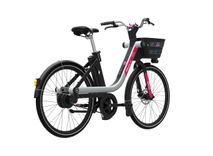Your network coverage refers to the number of bikes and parking spaces you wish to provide as part of your bike service. Deciding where your bike stations will be located is a separate task, which you can learn more about by reading our article on the subject here.
Once you have decided on the coverage, you can then start estimating your material investment costs. And we're off!
Step 1: Define the scope of the network
Here, it is important to reflect on a key question: what is the purpose of your bike network?
Do you want your services to reach a city or town centre only, the outer suburbs, or your entire area?
Fifteen believes that the best possible option is to serve as big an area as possible, to achieve several objectives:
- Create a public service that will genuinely include the entire population
- Promote a modal shift from driving to cycling over long distances, and thus reap the benefits of your cycling policy
While old bike sharing systems, mainly consisting of mechanical bikes, did not allow for extensive service coverage, electric bikes are a game changer.
It is now possible to offer a cycling solution for areas located far from a city or town centre.



